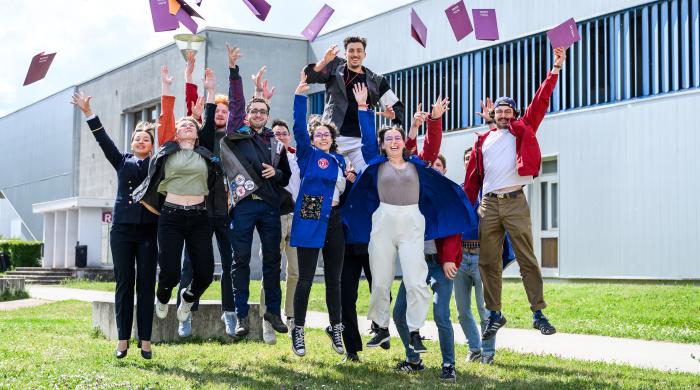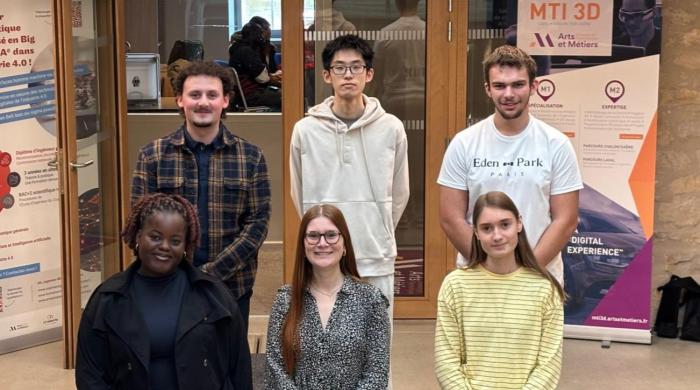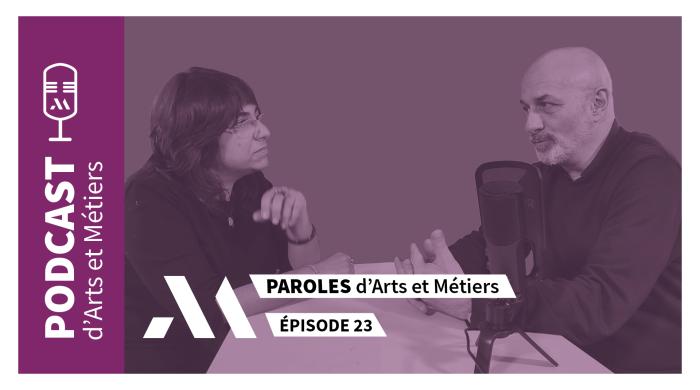
Grande Ecole students from the Angers campus carried out a fourth-year project to find out.
ACCOUNTING FOR GREENHOUSE GAS EMISSIONS AND QUALITY OF TEACHING
This study sought to quantify and compare the greenhouse gas emissions of remote and in-person courses. It was intended to provide answers and a decision-making tool to help campus management decide whether to make changes to its teaching methods while maintaining high standards of quality and reducing CO2 emissions.
"The study sought to not only reduce greenhouse gas emissions, but ensure that the quality of teaching remained attractive and interesting to students," says teacher Adrien Salomé, who led the project alongside Guillaume Grampeix.
FOUR POTENTIAL SCENARIOS
To determine which teaching method, in-person or remote, was better in terms of greenhouse gas emissions for Arts et Métiers's Angers campus, an initial study focused on the main sources of CO2 emissions for each model. It accounted for staff and students' daily commute by car, public transport and bike, both to and from campus, as well as the campus's heating and lighting needs for four types of rooms: lecture halls, classrooms, group study rooms and practical lessons in the workshops.
The same analysis was performed for student housing using a model of a typical student apartment. "Taking courses remotely often leads to higher heating and electricity consumption in student housing, which often has less efficient boilers than the one on campus, which is connected to the city of Angers' heating network," says Adrien Salomé. The study also examines the consumption of digital tools (computer workstations and Teams feeds) for both in-person and remote classes.
Meanwhile, in a survey sent to students and teachers on campus, a second study highlighted the educational value of courses by category and teaching model: in-person or remote. "For both in-person and remote courses, we made assumptions about the ability to adjust heating and lighting for the summer and winter seasons. We also created a typical week in the schedule that took the teaching model into account," says Adrien.
Four scenarios were evaluated in this way: 100% remote, 100% in-person, ½ day per week remote or 1 day remote per week. This was applied to each model and teaching format.
UNEXPECTED RESULTS
We saw that in winter, students use more heating for remote classes than they do for heating on campus. So it is better for the environment to attend classes on campus than to follow them at home, and the educational benefits are better because the course is much more interactive than when it is remote!
For the 100% remote week, this scenario entails less greenhouse gas consumption from transport, but heating consumption skyrockets for the winter. Besides, only taking courses remotely is not interesting.
For the scenario with four days in person and one day remote, there could be a benefit in the summer because one day of transport is eliminated, but in the winter, more greenhouse gases are emitted because students heat their homes more than what is consumed on campus.
When it comes to student and campus emissions, the best scenario for the Angers site is to strongly encourage in-person courses during the winter and to provide remote learning solutions for the spring and summer. This would limit teaching's greenhouse gas emissions, but it would not reach the massive reductions stipulated in the Paris agreements for 2050. It is, however, one potential avenue for action. This model takes into account both energy issues and the educational benefit of the lessons.
This project was presented to Arts et Métiers's general management as well as to ESSCA and the University of Angers, which are facing the same issues and are looking to use this methodology. Other educational projects related to sustainable development will be carried out in 2023 to look into low-tech solutions that might be simpler and emit less CO2.



